
Browse an alphabetical list of photographs. These historical images portray people, places, and events before, during, and after World War II and the Holocaust.
<< Previous | Displaying results 601-649 of 2641 for "Photo" | Next >>
The International Jew, based largely on the Protocols of the Elders of Zion, sold more than 500,000 copies and was translated into at least 16 languages. Published in Dearborn, Michigan, United States, 1920.
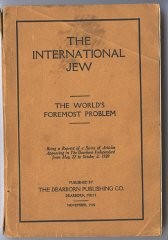
The Secrets of the Wise Men of Zion is the first documented version of the Protocols of the Elders of Zion published outside of Russia. Published in Charlottenburg, Germany, 1920.
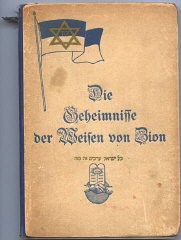
Many journalists covered the trial of Adolf Eichmann in Jerusalem. May 30, 1961.
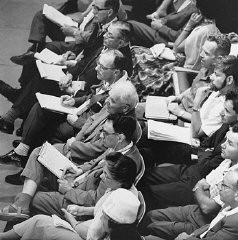
Cremation of corpses at Auschwitz-Birkenau. This photograph was taken clandestinely by prisoners in the Sonderkommando. Poland, summer 1944.
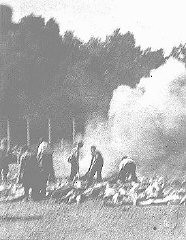
Charred remains of corpses near crematoria in the Majdanek camp, after liberation. Poland, after July 22, 1944.
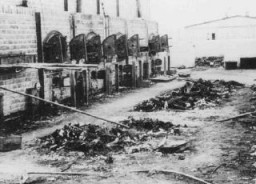
The crematoria at Dachau concentration camp, soon after the liberation of the camp. Germany, after April 29, 1945.
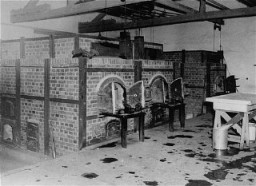
The crematoria at the Gusen camp, a subcamp of Mauthausen concentration camp, still held human remains after liberation. Austria, May 5, 1945.
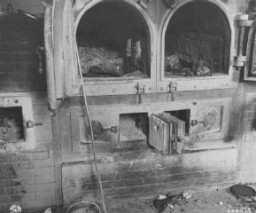
A crematorium at the Majdanek camp, outside Lublin. The photograph was taken after the Soviet liberation of Lublin/Majdanek in July 1944. Poland, date of photograph uncertain.
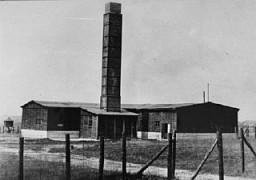
American soldiers finish their inspection of the Dachau camp's first crematorium. Dachau, Germany, November 18, 1945.
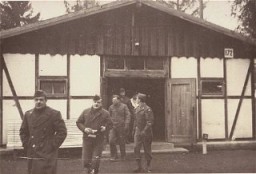
The crematorium building at the Flossenbürg concentration camp. Flossenbürg, Germany, May 1945.
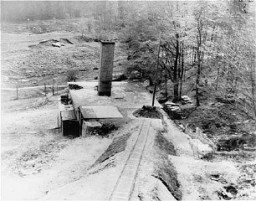
A survivor stokes smoldering human remains in a crematorium oven that was still lit in the Dachau camp. Photograph taken upon the liberation of the camp. Dachau, Germany, April 29-May 1, 1945.
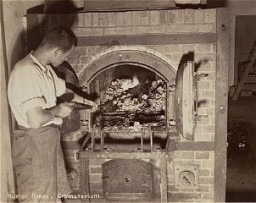
Crematorium oven used in the Bergen-Belsen concentration camp. Photograph taken after the liberation of teh camp. Bergen-Belsen, Germany, April 28, 1945.
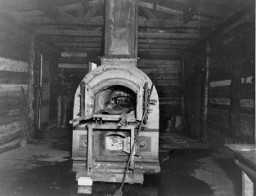
After the liberation of the Flossenbürg camp, a US Army officer (right) examines a crematorium oven in which Flossenbürg camp victims were cremated. Flossenbürg, Germany, April 30, 1945.

Infantryman of the US 89th Division cross the Rhine River in assault boats near St. Goar, Germany. March 26, 1945. US Army Signal Corps photograph taken by A. Graham.
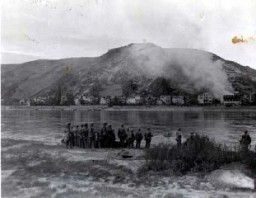
GIs keep low inside a landing craft during an assault across the Rhine at Oberwesel, Germany. March 22, 1945. US Army Signal Corps photograph.
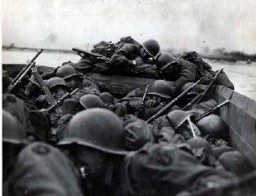
Germans in front of a Jewish-owned department store in Berlin during the anti-Jewish boycott. Berlin, Germany, April 1, 1933.
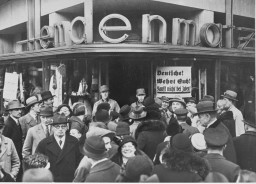
Jewish refugees, part of the Brihah movement (the postwar westward mass flight of Jews from eastern Europe), sleep on a crowded floor on the way to displaced persons camps in the American occupation zone. Seltz, Germany, 1947.
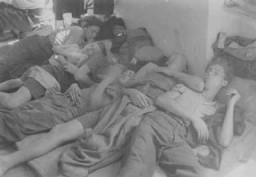
Cuban immigration papers issued to Ella Schatz, who had obtained passage aboard the Orinoco. On May 27, 1939, the Orinoco left Hamburg with 200 passengers bound for Cuba. Informed by radio of the difficulties other ships carrying refugees were facing in Havana, the captain of the Orinoco diverted the ship to waters just off Cherbourg, France, where it remained for days. The 200 refugees ultimately returned to Germany in June 1939. Their fate remains unknown.
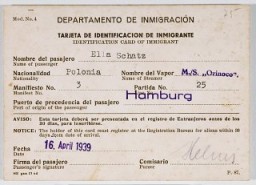
Jewish refugee youths, prevented by the British from landing in Palestine, learn sewing at a detention camp. The machines were provided by the American Jewish Joint Distribution Committee (JDC). Cyprus, 1947.
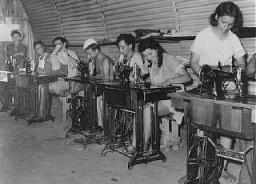
Czech Jews are deported from Bauschovitz to Theresienstadt ghetto. Czechoslovakia, between 1941 and 1943.

Corpses lie in one of the open railcars of the Dachau death train. The Dachau death train consisted of nearly forty cars containing the bodies of between two and three thousand prisoners transported to Dachau in the last days of the war. Dachau, Germany, April 29, 1945. This image is among the commonly reproduced and distributed, and often extremely graphic, images of liberation. These photographs provided powerful documentation of the crimes of the Nazi era.
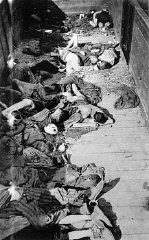
Survivors move around between rows of barracks in the newly liberated Dachau concentration camp. Dachau, Germany, May 1945. This image is among the commonly reproduced and distributed images of liberation. These photographs provided powerful documentation of the crimes of the Nazi era.
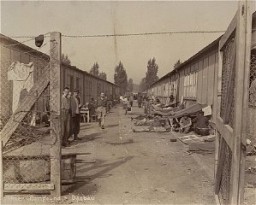
Camp survivors crowded in barracks at liberation. Dachau, Germany, April 29-May 1, 1945.
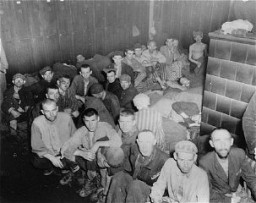
German forces occupied Riga in early July 1941. Here, war damage to Riga's city hall is shown by blackened areas around the building's windows. Riga, Latvia, August 1941.
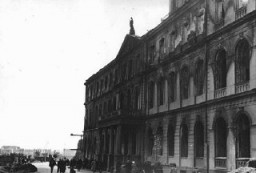
Dome of the Reichstag (German parliament) building, damaged by fire on February 27, 1933. Hitler used the arson to convince President Hindenburg to declare a state of emergency, suspending constitutional safeguards. Berlin, Germany, 1933.
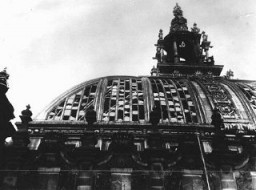
View of damage done to a Jewish-owned store during the anti-Jewish boycott. Frankfurt, Germany, April 1, 1933.
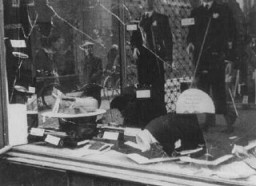
View of the burned-out Malbish Arimim synagogue on Teglash Street in Sighet. This photograph was taken after the deportation of the Jewish population. May 1944.
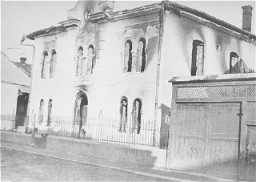
The shattered stained glass windows of the Zerrennerstrasse synagogue after its destruction on Kristallnacht. Pforzheim, Germany, ca. November 10, 1938.
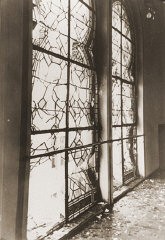
This prewar photo shows newly married Daniel and Laura (née Litwak) Schwarzwald enjoying a day on the beach in Zaleszczyki, Poland (today Zalishchyky, Ukraine). The Schwarzwalds were Jews from Lwów. They married in 1935 and lived in a fashionable Lwów district where Jews were a minority. Both Laura and Daniel pursued university educations and spoke Polish, Russian, German, and Yiddish. Daniel also spoke English. At the time of their marriage, Daniel was a successful businessman. He owned a lumber…

Rabbi Marcus Melchior, Danish chief rabbi, who warned his congregants that the Germans intended to round up Denmark's Jews. Melchior himself went into hiding and escaped to Sweden. Copenhagen, Denmark, before 1943.
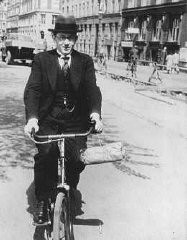
Danish fishermen (foreground) ferry Jews across a narrow sound to safety in neutral Sweden during the German occupation of Denmark. Sweden, 1943.

Jewish refugees being rescued aboard a Danish fishing boat bound for Sweden. October 1943.
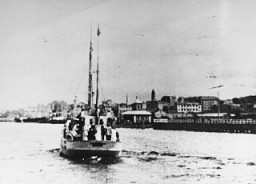
Danish refugees register in Sweden after escaping from Denmark. Sweden, after October 1943.
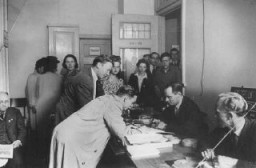
A boat used by Danish fishermen to transport Jews to safety in Sweden during the German occupation. Denmark, date uncertain.
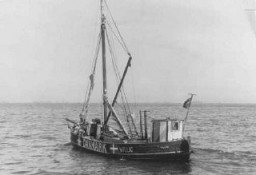
Danish fishermen used this boat to carry Jews to safety in Sweden during the German occupation. Denmark, 1943 or 1944.
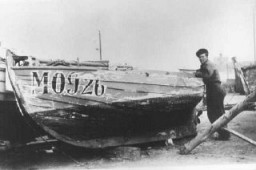
Jewish DP David Bromberg poses at the entrance to a barrack in the Ebensee displaced persons camp on October 30, 1946.
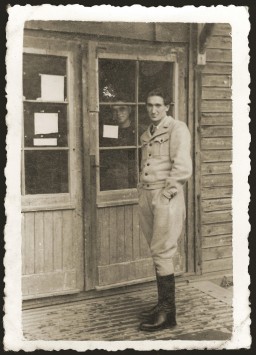
Group portrait of teenage boys in the Lodz ghetto. Dawid Sierakowiak is in the 3rd row, 4th from right. Dawid kept a diary from before the war where he meticulously noted not only events but also his own feelings, moods, and opinions. Dawid was an avid reader and an excellent observer.
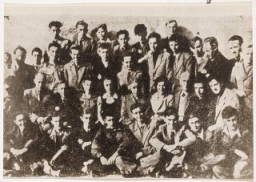
In 1942, eleven-year-old Dawid Tennenbaum went into hiding with his mother, settling in the Lvov region as Christians. Dawid disguised himself as a girl and as mentally disabled. This exempted him from attending school and prevented his being exposed.
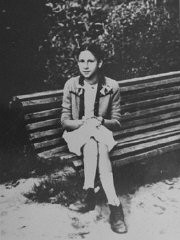
SS female auxiliaries getting off the bus on a day trip in July 1944; this image contrasts starkly with the arrival of a deported Hungarian men, women, and children in Auschwitz-Birkenau in May 1944. From Karl Höcker's photograph album, which includes both documentation of official visits and ceremonies at Auschwitz as well as more personal photographs depicting the many social activities that he and other members of the Auschwitz camp staff enjoyed. These rare images show Nazis singing, hunting, and…
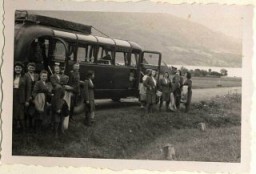
A Soviet inmate lies dead in the Mauthausen concentration camp quarry. Austria, between July 1941 and May 1945.
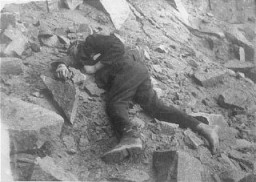
An American soldier looks at the corpses of Polish, Russian, and Hungarian Jews found in the woods near Neunburg vorm Wald. The victims were prisoners from Flossenbürg who were shot near Neunburg while on a death march. Germany, April 29, 1945.
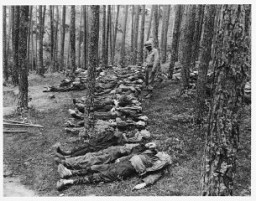
A Nazi decree issued in October 1941, in German and Polish, warns that Jews leaving the ghetto, or Poles who aid them, will be executed. Czestochowa, Poland.
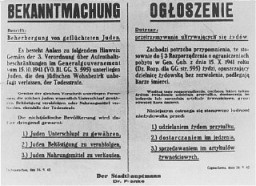
German officers examine Polish children to determine whether they qualify as "Aryan." Poland, wartime.
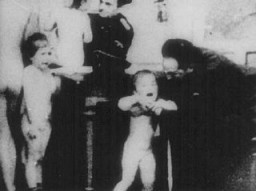
A large crowd fills Eisenhower Plaza during the dedication ceremony of the United States Holocaust Memorial Museum. Flags of the liberating divisions form the backdrop to the opening ceremony. Washington, DC, April 22, 1993.
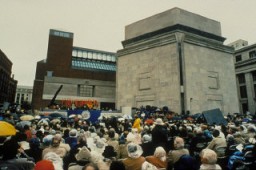
Defendant Adolf Eichmann takes notes during his trial in Jerusalem in 1961.
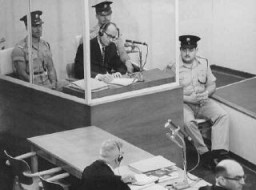
Defendant Adolf Eichmann identifies the city of Danzig (Gdansk) on a map during his trial in Jerusalem. Israel, July 18, 1961.
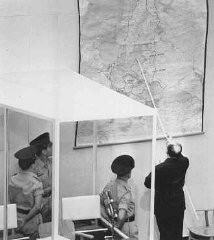
Defendant Alfred Jodl during the International Military Tribunal at Nuremberg. Jodl was Chief of the Armed Forces High Command Operations Staff.
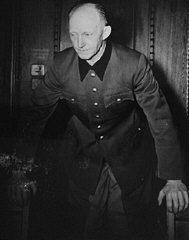
Fritz Sauckel follows the proceedings of the International Military Tribunal trial of war criminals at Nuremberg. He was found guilty of war crimes and crimes against humanity and was sentenced to death. Photograph taken in Nuremberg, Germany, between November 20, 1945, and October 1, 1946.
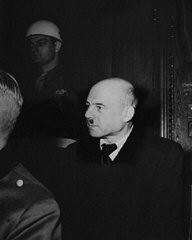
Defendant Julius Streicher, editor of the antisemitic newspaper Der Stürmer, on the stand at the International Military Tribunal trial of major war criminals at Nuremberg. April 29, 1946.
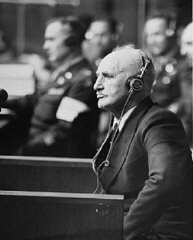
We would like to thank Crown Family Philanthropies, Abe and Ida Cooper Foundation, the Claims Conference, EVZ, and BMF for supporting the ongoing work to create content and resources for the Holocaust Encyclopedia. View the list of donor acknowledgement.